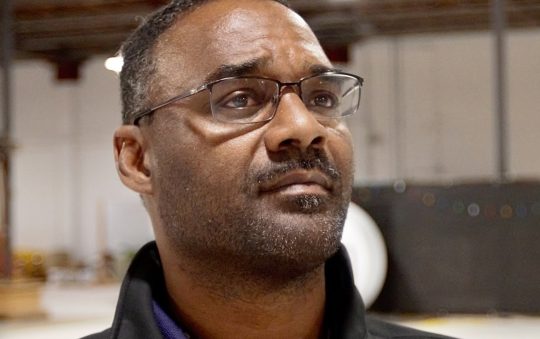
“We believe, this will mean, less traffic through the Valley and the Westside, but because this connects the entire regional transit network, you’re going to have less traffic and environmental benefits all across the base,” said Yusef Robb, spokesman for Sepulveda Transit Corridor Partners.
Recently, Sepulveda Transit Corridor Partners (STCP) held a briefing about developing a rail transit that would ease congestion on the 405 between the Valley and the Westside. Metro awarded STCP a contract to develop what Metro is calling Alternatives 4 & 5. The briefing was attended by STCP representatives, private parties and media outlets.
“You’re going to have economic benefits across the base because people are going to be able to shop easier, they’re going to be able to decide maybe to work a little bit farther from where they live, they might be able to decide, ‘Hey, I can live in a more affordable neighborhood and still get to work on time,’” said Robb.
Metro is currently evaluating 6 alternatives for a transit line connecting the San Fernando Valley and the Westside. Alternative 4 & 5 would be integrated with current and future transit systems such as the D, E, G (formerly Purple, Expo and Orange lines) lines, Metrolink, Amtrak and multiple bus lines. Alternative 4 would run above ground while Alternative 5 would be below ground.
Related Stories:
https://lasentinel.net/metro-public-safety-measures-are-having-a-real-impact.html
“You can have tremendous benefits in the Valley, the Westside but across L.A. because we’re going to be knitted together with not just the local, immediate transit network but with the entire regional transit network as well, whether it’s tying to lines into downtown L.A., connections to lines in South L.A., connections all the way up to the Antelope Valley and beyond,” said Robb.

He shared that this transit rail system would be utilizing automated rail technology but wanted to make sure it’s clear—human beings are involved.
“I think people think automated like, ‘Oh God, the robots are taking over’—no,’” said Robb.
He continued, “So, picture the lines and you have all the trains spaced out from a central command, they’re all kind of moving around right like slot cars.
“Inevitably, someone’s going to take a little too long getting in the door, the system is able to automatically space out the trains to maintain safety, distance and speed and traditional rolling stock that don’t have the technology that we do, you have to leave bigger gaps to make up for that, to make sure you’re safe.
“So, we can close the gaps because this automated technology, now I want to say, automated doesn’t mean peopleless. What it does [mean is], someone doesn’t need to be locked in the cabin with their hand on the throttle.
“We’re freeing up humans to do other things.”
STCP’s says their plan will get riders from the Antelope Valley to Westwood in 20 minutes if this project is built.

“You can get from Boyle heights to Van Nuys if this project is built. You can get from Universal Studios right to Santa Monica and the beach using this line, so it’s really going to have a huge impact on L.A.,” said Robb.
“It’s going to be a game changer for local residents in terms of the surface streets they use, in terms of the freeway they use every day.
“It’s going to benefit all of us if we can get from Ventura Blvd. to West Westwood at 6 ½ minutes that’s more shopping, that’s more movies, that’s more restaurants, that’s more fun, that’s more life.”
For more information on Sepulveda Transit Corridor Partners, please visit www.sepulvedatransit.com.






